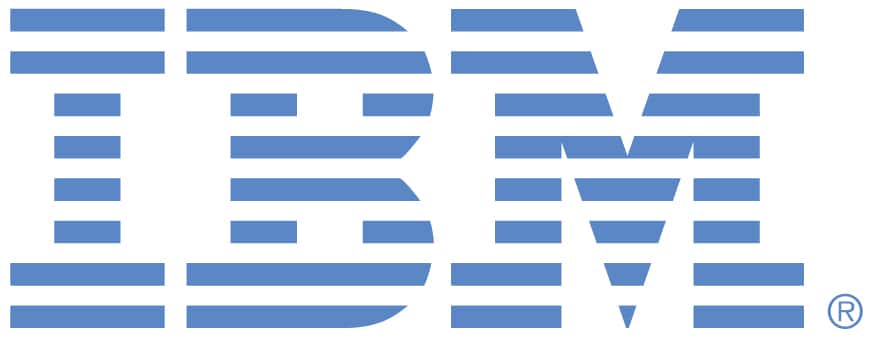
WEBINAR SUMMARY
Intelligent automation: reimagining insurance processes
After a year of change and innovation like no other, which in itself came on top of a decade of serial disruption, the insurance industry finds itself poised for further transformation as intelligent automation gains traction. As panellists on the Insurance Innovators’ Intelligent Automation, Reimagining Insurance Processes webinar agreed, this disruption comes as insurers continue to grapple with the perennial issues of fierce competition, rising customer expectations and the need to protect margins by driving out inefficiencies.
“The last 12 months has seen a dramatic acceleration of the way technology has transformed the industry and that acceleration will continue,” said Nick Baldridge, Partner in Financial Services Digital Strategy and iX Practice at IBM. “Historically, IT has been in the back seat of the insurance industry, in the last two decades it’s moved to the passenger seat but now it’s becoming a true co-pilot, driving the industry forward.”
AI, automation and machine learning are among the technologies increasingly reaching for the steering wheel. Ashish Savani, Vice President of Business Transformation & Strategy Initiatives at Zurich, said that while early adoption of automation had focused on costs, there was now growing awareness of other areas where Robotic Process Automation combined with AI and machine learning could deliver a wider range of benefits.
Yet this journey is not without its pain points. “Where organisations have siloed areas for automation, the results have been mixed,” said Savani. “There’s a need to look at it in a more holistic fashion.”
Nick Baldridge of IBM said the shift to virtual engagement has exposed how little some industry players understand the needs of their customers, how their employees add value to the value chain or the important role that ecosystem partners play in bringing that proposition to light. “We recommend really getting grounded in deep user research, or “design thinking”. It’s where our clients can learn so much about how to drive value to the edges and how to get products and services to market much faster.”
He added that customer comfort with technology and virtual engagement has changed dramatically in recent years and that’s really been amplified over the last 12 months. “This will open up a whole new set of opportunities and business models,” he said.
New ways of working
“Sometimes we assume we know our customers’ needs without actually validating that.”
Ashish Savani, Zurich
Yet realising these opportunities will require insurers to work, think and invest in a very different way. Ashish Savani of Zurich said the first steps to becoming more innovative and agile workflow was to foster an innovation mindset with employees and draw on the capabilities of marketplace providers. “And make the customer part of the journey,” he said. “Sometimes we assume we know their needs without actually validating that.”
“Make some mistakes, break some eggs and don’t be afraid of failure because from that you can learn a tremendous amount”
Nick Baldridge, IBM
Our panellists agreed this was a big step for the industry, which tends to be risk averse. “It’s about enabling teams to make some mistakes, break some eggs and not be afraid of failure because from that you can learn a tremendous amount,” said Nick Baldridge of IBM. “Make small measured bets, rooted in the end user research you have done, to demonstrate the value and then use it to springboard and scale.”
Demonstrating value
“The benefit value really begins to scale as you bundle more and more things and fundamentally start reimagining what’s possible and how new business models could be created”
Nick Baldridge, IBM
This can be a big ask for an industry not used to such an approach, and that can make it difficult to secure investment. “These are brand new technologies for the carriers and this is an industry that’s risk averse so there’s some reluctance to put big money into something that may not work,” explained Benku Thomas, Vice President of Claims Technology and Architecture at Chubb.
Nick Baldridge of IBM highlighted some of the value cases IBM has built, pointing out that transforming a single process delivers a benefit of 5-10 per cent but blending multiple processes and work activities, the combinatorial effect of automation and AI on a single function can deliver a 25-50 per cent benefit. “However, if you are taking multiple functions, such as the entirety of claims management or underwriting, then that benefit could be 50-70 per cent,” said Baldridge. “The benefit value really begins to scale as you bundle more and more things and fundamentally start reimagining what’s possible and how new business models could be created.”
He pointed out that loss adjustment expenses in the US auto insurance industry alone are roughly US$32-34 billion. “If you’re building a value case, imagine shaving two, three, four per cent off that. The numbers start to add up pretty dramatically,” said Baldridge.
Benku Thomas of Chubb agreed. “One of the biggest benefits is reduced cost of doing business,” he said. “As you start to shave off small percentages that amounts to huge sums of money.”
“Automation leads to more consistent processing decisions and a better customer experience through the insurance life cycle”
Benku Thomas, Chubb
Thomas said it’s not just cost savings. “Automation leads to more consistent processing decisions and a better customer experience through the insurance life cycle,” he said. “We have a lot of human work flow and human capital knowledge but it doesn’t necessarily mean consistency – automation gives you that.”
“What’s more,” added Thomas, “when you automate, you’re not just automating processes, you’re also collecting data as you go.”
Human capital, human value
But automation isn’t the answer to everything. Ashish Savani of Zurich stressed that one of the industry’s strongest assets is humans. “But they could be put to better use in customer experience and services we create for the customer,” he said. “Get them onboarded into this process through early communication and then create opportunities for upskilling and new opportunities.”
Nick Baldridge of IBM agreed. “Empower employees with information so they can do their job well and lift them up a level so they can focus on the value-added stuff rather than the mundane administration that can be handled by intelligent automation,” said Baldridge. “Reimagine how this work can be done and break down silos that exist within enterprises. That opens up a whole new set of opportunities to allow employees to add value that wasn’t even possible before.”
Getting started
Most insurers made great strides during 2020 and now is the time to capitalise on that work. It’s important, however, not to sign blank cheques but to approach the next phase of the automation and innovation journey with purpose and focus.
“We see people trying to be great at everything but the reality is the management focus, the attention and the investment will get diluted really quickly,” said Nick Baldridge of IBM. “Pick what to focus on and be realistic. What do you want to be great at and what can you offload to a partner so you can focus on the things that matter?”
“You need to think about how these technologies will mesh with the customer experience”
Benku Thomas, Chubb
Benku Thomas of Chubb said this can mean going back to basics. “Insurance processes are manual and human so to get the ROI out of these technologies requires us to rethink the insurance life cycle itself,” he said. “You also need to think about how these technologies will mesh with the customer experience – virtual inspections, for example, requires customers to collaborate with the carrier when it comes to using the technology.”
Nick Baldridge of IBM agreed this process will ask hard questions of current insurance operations. “These last 12 months have exposed many inefficiencies in the way work is done. Take a step back and see if there’s a better way to get this done,” he advised. “It’s a dialogue happening in every boardroom across the industry right now.”
He said carriers should ask more of their technology partners when it comes to driving value from their investments. “We’re regularly putting skin in the game,” said the IBM partner. “Ask your partners to help you demonstrate the value. We’re seeing more of this and we are open to it.”
“There are so many new entrants and customer needs are changing. If you do not meet them, then you will become obsolete”
Ashish Savani, Zurich
One thing was clear from the discussion: intelligent automation is set to sweep the industry, whether it’s ready or not. “This isn’t an option anymore, it’s necessary,” said
Ashish Savani of Zurich. “There are so many new entrants and customer needs are changing. If you do not meet them, then you will become obsolete.”
WEBINAR PRODUCED IN PARTNERSHIP WITH
IBM is a global cloud platform and cognitive solutions company, which has continually evolved over the past century to remain at the forefront of technological innovation. Our capabilities in data and analytics, cloud, mobile, social and security have helped the UK evolve to become one of the world’s most digitally advanced nations. This digital revolution empowers us and our clients to gather and analyse data in ways that have never been possible before—helping UK organisations unlock new insights and usher in a new era of cognitive business.
IBM enables clients to improve the operational efficiency of their physical assets and reduce costs through the power of IoT data and artificial intelligence. By collecting and curating data from billions of connected devices, sensors, and systems worldwide, we empower enterprises to derive new insights from their equipment, vehicles and facilities. With more than 6,000 client engagements in 170 countries, an ecosystem of 1,400 partners, and 1,300 IoT-related patents in our portfolio, our industry expertise, leading security, and solutions built for a hybrid cloud environment firmly establish us as a leader in IoT.
Stay current with Insurance Innovators
Subscribe to our newsletter to receive news, insights and special offers.
